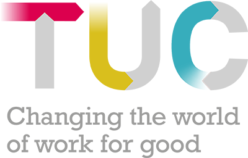There are a whole bunch of challenges for union members in exercising their right to strike, and being able to raise sufficient pressure to win their disputes. Some of those are newer trends that have been born out of the pandemic. Some have been growing for a long time.
Firstly there are the hurdles in our way. We’ve got to contend with the some of the harshest regulations and thresholds on balloting and conducting strikes in industrialised economies. And many within the Conservative government are currently threatening to make this even worse.
So if we’re working within a heavily rigged system, we’ve got to make sure every vote counts. This is where the agility and speed of digital interactions could be particularly helpful.
Secondly our members are less physically connected and more atomized than they have been before. Working from home in a mushroomed in the pandemic and social distancing reduced contact for loads of people.
This is accelerating trends that we’ve seen from the growth of casualised working anyway. It’s harder now for workers to form personal relationships. It’s harder to have organizing conversations, harder to build solidarity and it’s harder for unions to reach critical numbers of members in person.
So are there ways that we can be using digital to rebuild community and solidarity between people who see each other less? Or to use them to help people make physical connections more reliably?
Then thirdly, there’s the fact that our members’ expectations are changing. Millennials are now the majority of workers. That’s people who’ve entered the workforce since the internet age. For them, digital is the first choice for any kind of interaction. They want things to be immediate, responsive, always on flexible, controllable, and accessible from their phone wherever they are.
And that goes from how they’d expect a union to work as well. Some of that is better targeted member experience, and some of it is work behind the scenes to improve the speed of processes. What links both of those is improving the integrity and agility of our member databases.
So we’re defining strike tech as being any tool that helps unions to administer ballot and strike processes more effectively, engage and mobilize members more effectively, and build pressure more effectively on employers. And that covers a huge range of tasks and union activities.
For example, at the TUC, we’ve been looking at how we can make better use of our Megaphone online campaigning platform to support unions in dispute with their leverage campaigns. Or to make contact with affected workers that they don’t have in membership yet. And with our new strike fund tool, we’re trying to help affiliates set up easy ways to fundraise for hardship funds or campaign funds with small value donations from supporters.
We’ve been compiling case studies of some great union work in this space, which you can read here:
- Using P2P SMS in a strike ballot campaign – RMT case study
- Using social media in strike ballot campaigns – CWU case study
- Data for industrial action balloting – PCS case study
We’re keen to hear more on this and will be returning to some of the key challenges in strike tech over 2023, so please get in touch if there’s stories you want to share, or problems you’d like to collaborate on.
